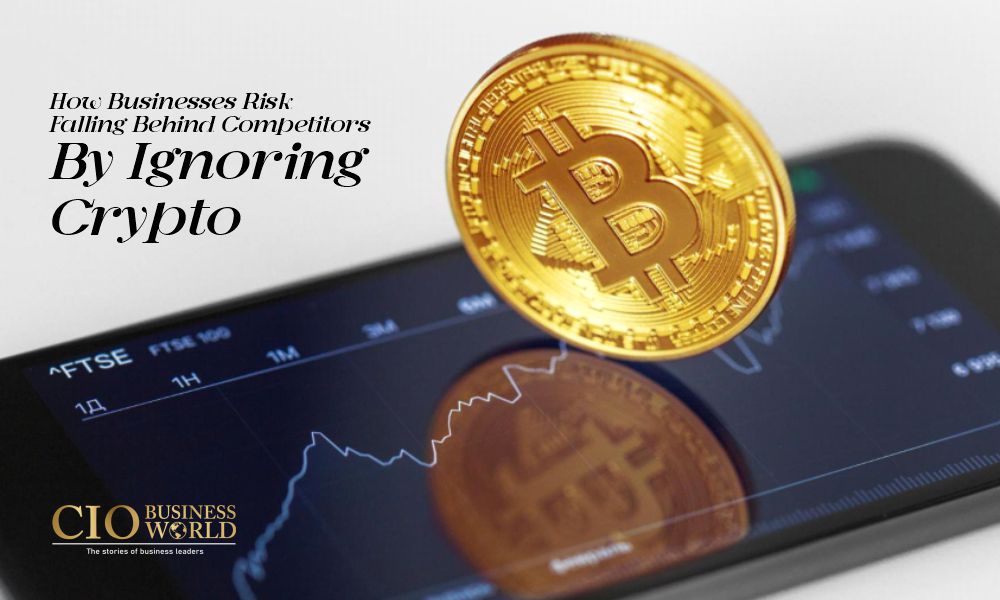The world of business has started to view cryptocurrency with growing interest. The Asia Pacific region has experienced significant growth in its activity, while India and Vietnam stand out as leading nations. The two regions of Latin America and Sub-Saharan Africa maintain consistent usage patterns, including everyday transactions and money transfer services. The two regions of North America and Europe lead in terms of volume because they have established regulatory frameworks and substantial interest from major corporations.
From local shops to online retailers, many now accept crypto because customers are asking for it and because the tools to do so are easier than ever to set up. The story is simple in that the more businesses that offer crypto, the more normal it becomes. Organizations that put off their transformation process will remain stagnant while their competitors move ahead.
Competitors Move First
One of the many reasons to focus on cryptocurrency comes from the fact that competitors have already started supporting and implementing it. The retail sector, technology, and travel industries are among several industries accepting cryptocurrency payments between 2023 and 2025. These businesses give customers the option to select their payment preference.
It is not just Bitcoin that is on the table anymore. Several new and trending meme coins are gaining traction, lauded for their utility. For example, the small and speculative nature of Bitcoin Hyper and MaxiDoge tokens are still in their presale phase, but they have had significant success thus far. Bitcoin Hyper, for example, has been trading around $0.0129 in presale, up more than 80% from launch. MaxiDoge has been priced near $0.0062, gaining more than 30% in a week this month. This shows investors’ enthusiasm and the market’s energy through these tokens. This should be sufficient evidence for businesses that are hesitant about cryptocurrencies, while still volatile in nature, are gaining ground.
Why Customers Care About Payment Options
People like to have choices. When a store only accepts cash or a single card provider, it feels limiting. Crypto works in the same way. By offering it, a business signals that it respects customer preference. Between 2023 and 2025, survey data shows that more than 20% of shoppers worldwide have either paid with crypto or considered doing so.
For younger professionals, freelancers, and digital-first workers, crypto is often a normal part of their wallets. If they see two competing shops, and only one lets them use what they already have, the decision is easy. The customer goes where the payment is easier.
Building a Forward Image
Reputation matters. Accepting cryptocurrency is not only about the payment itself but also about the message it sends. From 2023 onward, we have seen major brands highlight crypto payments in marketing campaigns. Airlines, hotels, and even local coffee shops have advertised their crypto acceptance.
That tells buyers that this company is keeping pace with change. On the other hand, a refusal to even consider it can make a company appear behind. Over time, that impression can stick. A forward image attracts new clients, while a slow response can create doubt about how adaptable a business is.
The Data Between 2023 and 2025
The last three years have offered real examples of what happens when crypto is ignored. Payment processors like PayPal and Stripe began rolling out crypto options for merchants. Shopify integrated crypto payments into its platform. According to Deloitte’s 2023 report, nearly 75% of retailers planned to accept crypto within the next two years. By mid-2025, that prediction has come true for many.
In contrast, businesses that stayed away have been less visible online. Customers talk on forums and social media about where they can spend crypto, and those names become part of a list of “go-to” places. If your store is not on that list, you are invisible to a growing part of the market.
Overcoming the Hesitations
Some businesses hold back because they think crypto is too unstable or too technical. The truth is, payment processors now handle the tricky parts. Merchants can accept crypto and instantly convert it into dollars, without worrying about the price moving. That takes away most of the risk.
As for the “technical” side, today’s systems are simple. If a store can set up an online payment gateway, it can add crypto just as easily. Refusing to look at these solutions is like refusing to install a card machine when credit cards first became popular. Those who resisted back then lost out. The same pattern is repeating now.
Competitive Advantage in Action
In 2024, several mid-sized retailers in Europe reported higher online traffic after announcing crypto support. By 2025, reports from the US show that restaurants offering Bitcoin and stablecoin payments drew in a steady stream of younger professionals who wanted to pay their way. These are not isolated stories, but rather they are hints of a much bigger trend.
The lesson is simple; and that is that customers do not always choose a business because of what it sells. They sometimes choose based on how easy it is to pay. If your rival makes it simple while you make it harder, you lose ground without even realizing it.
Staying Relevant in a Fast Market
Crypto moves fast. One week, a token like MaxiDoge is trending because of community hype. The next week, a new token could appear and grab attention. Whether a business owner likes that or not, customers notice. A company does not need to back every coin, but offering the option to pay in crypto keeps it on the same page as its customers.
Ignoring it may not cause instant losses, but over time, the crack between those who accept and those who refuse becomes wide. Being late to the table means struggling to catch up.
Conclusion
Businesses today face a choice. In 2025, a survey shows that institutional investors will allocate more than 5% of their assets under management to cryptocurrencies at a rate of 59% and US investors lead all other investors in cryptocurrency adoption. Many see crypto as a unique asset class for portfolio diversification. This shows that crypto has become a big part of how people think about money and payments. Competitors who accept it gain an advantage, both in attracting new customers and in shaping a forward-looking image. Those who ignore it risk fading into the background, losing ground to rivals who acted faster.









